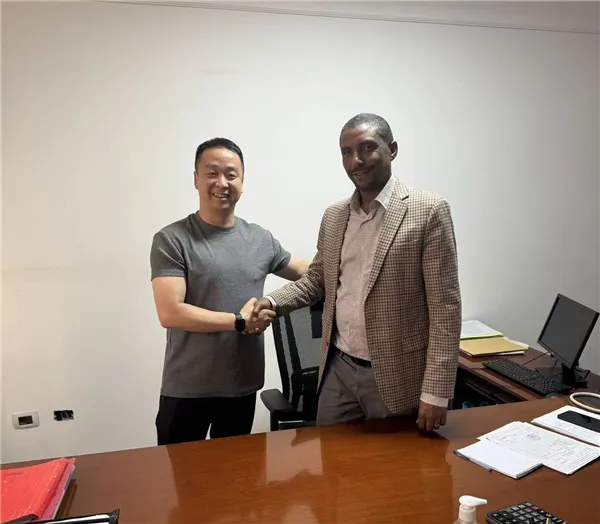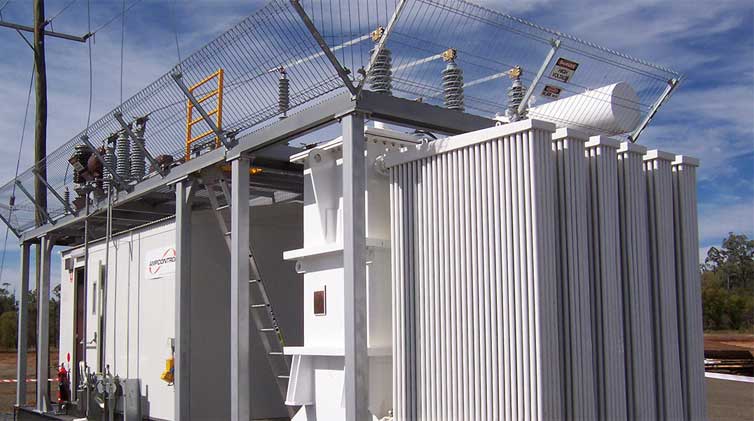Application of Step Up Transformer
The step up transformer application is to convert the voltage to facilitate power transfer. After the voltage is boosted by the step-up transformer, the line loss can be reduced, the economy of power transmission can be improved, and the purpose of long-distance power transmission can be achieved. The step-down transformer can turn the high voltage into the voltage used by the user at all levels to meet the needs of the user.
The step up transformer is a type of transformer that has a voltage compensation boost, and is also known as a boost compensator. In fact, most transformers are divided into two types of step-up transformers and step-down transformers according to the different lifting voltages. The analysis of the two transformers from the voltage situation is completely opposite. The step-up transformer has more turns than the original coil, and the step-down transformer has fewer turns than the original.
The step up transformer is a special isolated transformer, also has a single phase and three phase. The voltage levels are 220V, 380V, 400V, 415V, 480V, 500V, 515V, 660V, 690V, 1140V to 60KV and other different voltages. The body is made of imported silicon steel sheet and high quality oxygen-free copper wire. It has the advantages of small size and good product quality. It is widely used in construction engineering lines where the voltage is too long to reach the required voltage, and the undervoltage compensation for different occasions such as imported equipment and foreign voltages.
When the AC voltage U1 is applied to the primary side of the transformer and the current flowing through the primary winding is I1, the current generates an alternating magnetic flux in the iron core, causing electromagnetic contact between the primary winding and the secondary winding. According to the principle of electromagnetic induction, the alternating magnetic flux passes through the two windings to induce an electromotive force. Its size is proportional to the number of winding turns and the maximum value of the main flux. The voltage on one side of the winding turns is high, and the voltage on the side where the number of turns is small is low. When the secondary side of the transformer is open, that is, when the transformer is unloaded, the secondary terminal voltage is proportional to the number of turns of the secondary winding, and the step up transformer is applied to the varying voltage.
When the secondary side of the transformer is connected to the load, a secondary current will pass under the action of the electromotive force E2. The electromotive force generated by this current will also act on the same core to reverse demagnetize. However, since the main magnetic flux depends on the power supply voltage, and U1 remains substantially unchanged, the primary winding current will automatically increase by one component to generate the magnetomotive force F1 to cancel the magnetomotive force F2 generated by the secondary winding current. Under the action of the secondary winding currents L1 and L2, the total magnetomotive force acting on the iron core (excluding the no-load current I0). The secondary current ratio and the secondary voltage ratio are reciprocal to each other, and the power of the secondary winding of the transformer is substantially constant (since the loss of the transformer itself is relatively small compared to its transmission power). The magnitude of the secondary winding current I2 depends on the load, so the magnitude of the primary winding current I1 also depends on the load, and the step up transformer application acts as a power transfer.
The step up transformer is a type of transformer that has a voltage compensation boost, and is also known as a boost compensator. In fact, most transformers are divided into two types of step-up transformers and step-down transformers according to the different lifting voltages. The analysis of the two transformers from the voltage situation is completely opposite. The step-up transformer has more turns than the original coil, and the step-down transformer has fewer turns than the original.
The step up transformer is a special isolated transformer, also has a single phase and three phase. The voltage levels are 220V, 380V, 400V, 415V, 480V, 500V, 515V, 660V, 690V, 1140V to 60KV and other different voltages. The body is made of imported silicon steel sheet and high quality oxygen-free copper wire. It has the advantages of small size and good product quality. It is widely used in construction engineering lines where the voltage is too long to reach the required voltage, and the undervoltage compensation for different occasions such as imported equipment and foreign voltages.
When the AC voltage U1 is applied to the primary side of the transformer and the current flowing through the primary winding is I1, the current generates an alternating magnetic flux in the iron core, causing electromagnetic contact between the primary winding and the secondary winding. According to the principle of electromagnetic induction, the alternating magnetic flux passes through the two windings to induce an electromotive force. Its size is proportional to the number of winding turns and the maximum value of the main flux. The voltage on one side of the winding turns is high, and the voltage on the side where the number of turns is small is low. When the secondary side of the transformer is open, that is, when the transformer is unloaded, the secondary terminal voltage is proportional to the number of turns of the secondary winding, and the step up transformer is applied to the varying voltage.
When the secondary side of the transformer is connected to the load, a secondary current will pass under the action of the electromotive force E2. The electromotive force generated by this current will also act on the same core to reverse demagnetize. However, since the main magnetic flux depends on the power supply voltage, and U1 remains substantially unchanged, the primary winding current will automatically increase by one component to generate the magnetomotive force F1 to cancel the magnetomotive force F2 generated by the secondary winding current. Under the action of the secondary winding currents L1 and L2, the total magnetomotive force acting on the iron core (excluding the no-load current I0). The secondary current ratio and the secondary voltage ratio are reciprocal to each other, and the power of the secondary winding of the transformer is substantially constant (since the loss of the transformer itself is relatively small compared to its transmission power). The magnitude of the secondary winding current I2 depends on the load, so the magnitude of the primary winding current I1 also depends on the load, and the step up transformer application acts as a power transfer.
Jump to Content Sections
Leave a Message
You May Also Like
 English
English  français
français  Español
Español  русский
русский  العربية
العربية  tiếng việt
tiếng việt  Malay
Malay  Indonesia
Indonesia  বাঙালি
বাঙালি 


